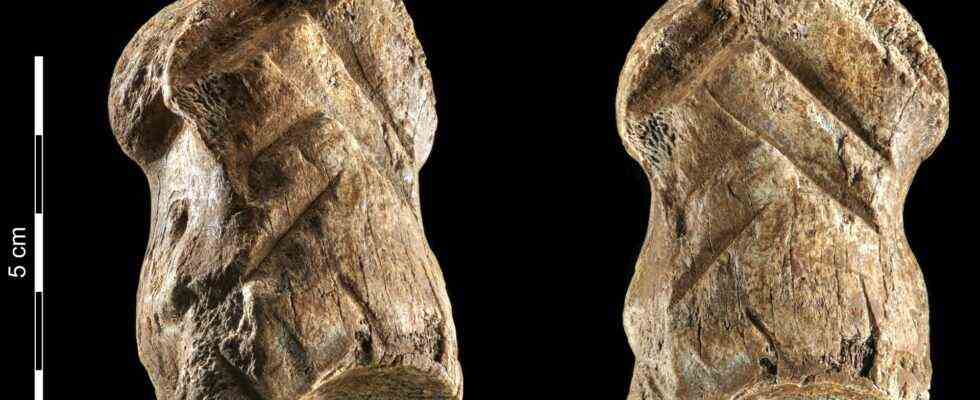Status: 05.07.2021 5:01 p.m.
Researchers at the University of Göttingen have found a decorated animal bone in the unicorn cave in the Harz Mountains. The “sensational find” shows that Neanderthals were creative long before the arrival of modern humans.
Neanderthals were creative thousands of years before the arrival of modern humans in Europe. According to researchers, this is indicated by a bone find in a cave in Lower Saxony, as announced by the University of Göttingen.
Angular pattern
The inconspicuous foot bone, the age of which has been dated to more than 50,000 years, shows an angular pattern of six notches. The bone was assigned to a giant deer (Megaloceros giganteus). The scientists speak of a “sensation”.
A research team led by the University of Göttingen and the Lower Saxony State Office for Monument Preservation (NLD) analyzed the new find from the so-called unicorn cave in the Harz Mountains. “We quickly realized that it must not be about battle marks, but clearly an ornament,” said excavation manager Dirk Leder from the State Office.
A research team is working on the Einhörnhöhle in Lower Saxony.
Image: dpa
To make a comparison, the team experimented with the bones of today’s cattle. Analyzes show that the bone probably first had to be boiled in order to then carve the pattern into the softened bone surface with stone tools in about an hour and a half.
Bone is probably over 51,000 years old
With the help of the radiocarbon method, the ornate bone was found to be more than 51,000 years old. According to the researchers, this was the first time that an object decorated by the Neanderthals was reliably dated using this method.
So far, some jewelry objects from the time of the last Neanderthals were known in France. However, these approximately 40,000 year old finds are viewed by many researchers as imitations, because by this time modern humans had already spread to parts of Europe.
Jewelry objects and small ivory sculptures have come down to us from around the same time cave finds of modern humans on the Swabian Alb in Baden-Württemberg.
“The old age of the new find from the unicorn cave shows that the Neanderthals were already thousands of years before the arrival of modern humans in Europe able to independently produce patterns on bones and probably also to communicate with symbols,” explained Thomas Terberger from the NLD.
“Creative power”
This speaks “for an independent development of the creative power of the Neanderthal man”. The bone from the unicorn cave is one of the most important finds from the time of the Neanderthals in Central Europe.
The researchers have been carrying out new excavations at the Einhornhöhle in the Göttingen district since 2019. Well-preserved cultural layers from the time of the Neanderthals could be examined in the collapsed entrance area of the cave. The ornate foot bone was also found among the remains of the hunting booty.
As early as the Middle Ages, ice-age animal bones were found there, which the finders then took for unicorn bones and sold as medicine. The cave owes its later name to this fact. Archaeological excavations have been carried out in and in front of the cave since the discovery of the first stone tools from the time of the Neanderthals in 1985.

